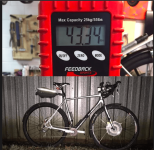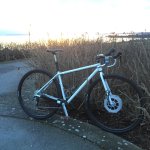Jil
1 kW
Yes I have seen Long Way Up, and their travel in Patagonia is a joke... Using a huge generator to feed their batteriesdogman dan said:Morocco would be a lot more doable by e bike. See the more recent Ewan Macgregor tv series, Long Way Up. They rode Patagonia to California on electric motorcycles. They had some good charging places set up ahead of time, but for some sections with big climbs, a bit far apart. Patagonia was the worst, but the big desert was pretty uninhabited.
You're probably right. In such place, it seems better to have 3-400 km and 5000 m D+ of autonomy at least, i.e. ~2 kWh of batteries even with a very wise consumption. So, a lot of weight, and not transportable with you by plane even as Ligo batteries.dogman dan said:I still think if your battery is small enough to fly with, its not going to do for tours in huge mountains, and uninhabitable deserts.
For now, let's keep ebike travel for places where you can plug every 200 km or so :wink:




